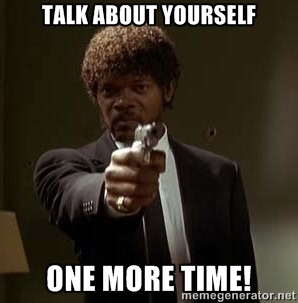Web Content Mistakes

1. Welcome to my website
In modern web design it is now seen as unnecessary to use a heading to welcome or greet someone to your website, in the same way you wouldn't welcome someone to a brochure or other marketing literature.
Instead it's generally better to use the space more productively and start with a meaningful or catchy heading that gets straight into the detail.
2. Links with "Click here"
With the advent of touch mobile devices (so users touch rather than click), and generally a better understanding of the web, links with "click here" in them are old school! Example:
- Click here to download brochure can now be just Download brochure
- To contact us, please click here can now just be Contact us (or a suitable word linked in the context of a sentence etc.).
There's no longer a need to spell it out.
3. Talking about yourself too much
This is the #1 marketing crime. But it's often seen, with an opening paragraph that may go something like:
We were established in 1989 and <blah>. We have X employees across Y sites <blah, blah, blah>.

In reality if a website is trying to sell a service or product, it should tell the customer what's in it for them, not go on about themselves. It's generally of very little interest to customers and an obstacle.
Such information is best relegated to an about or history page of low prominence. An interesting exercise is to go to the BBC's website and try to find their about page. Found it? Despite the BBC's rich history, it's given a small footer link because it's not seen as an important objective.
4. Irrelevant imagery
An image can convey a 1,000 words as they say, but there are countless websites with imagery that is not really relevant to their objective, so they end up wasting an opportunity. Examples:
- Outsides of company buildings. These may have merit on contact pages, but on a start page does it really help sell a product or service? (maybe if you're an architect). Building outsides are also good at creating a black box / faceless perception that isn't particularly welcoming. Wouldn't it be better to show the inside of the building with happy and productive staff that conveys company/organisation values?
- Scenic imagery and patterns. Useful if you're a tourism website or perhaps embroiderer, but if not, does it really help your website meet it's objective?
5. Where's the price?
We've all been here. You visit a great looking website that sells products or services to the wider public only to find there are no prices listed anywhere. This can produce frustration and numerous perceptions, but worst of all it can divert potential customers elsewhere.
- "If it doesn't list a price, you can't afford it." - the common shopping perception.
- Visitors may not want to ask for a price then a) feel uncomfortable turning it down b) end up on a marketing list c) hang about to wait if someone might get back.
- Visitors would rather approach the website that does show a price, rather than the one that doesn't.
- If you do show a price, make sure it's easily found. After you've convinced someone to buy something, it's the next thing they'll try to find. But sometimes the first!

